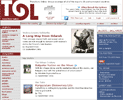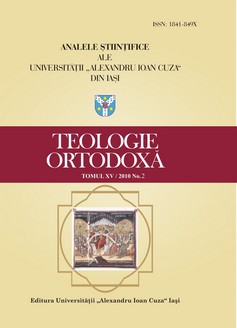Magic square n. 4; Magic square n. 6
Bűvös négyzet n. 4; Bűvös négyzet n. 6
Keywords: Visual poetry; two poems.
More...Keywords: Visual poetry; two poems.
More...
Keywords: annual report; urban population; social network; job; National Statistics Institute; poverty rates; taxes; analysis; UN Population Fund
With its villages dying and its capital bursting at the seams, can Bulgaria deal with the global trend of urbanization?
More...
Keywords: collapse of communism; child trafficking; UNICEF; Terre des Hommes; traffickers; Europol; human trafficking; poverty; discrimination
Albanian authorities are prosecuting more child traffickers, but there's no way of knowing if it's making a difference
More...
Keywords: Russian government; Beslan siege; Russian tanks; terrorist; Nurpashi Kulaev; Independent investigators; Journalists; Yury Savelev
Two years later, investigators say the Russian government is trying hard to bury the truth about the Beslan school siege.
More...
Keywords: referendum on independence; Omurbek Tekebaev; heroin; Georgia; Kodori Gorge; Abkhazia; South Ossetia; corruption; Kurmanbek Bakiev; Feliks Kulov; Askar Akaev
Something is rotting in Kyrgyzstan and the West has done too little to prevent it.
More...
Keywords: pollutants; deterioration; archival materials; Scanning Electron Microscope; EDAX analysis
Pollutants contribute heavily to the deterioration of library and archival materials. The two major types of pollutants are gases and particulates. Gaseous contaminants — especially sulfur dioxide, nitrogen oxides, peroxides, and ozone — catalyzes harmful chemical reactions that lead to the formation of acid in materials. This is a serious problem for paper and leather, which are particularly vulnerable to damage caused by acid. The paper changes colour and becomes brittle, and leather becomes weak and powdery. Particulates — especially soot — abrade, soil, and disfigure materials.
More...
Keywords: God; man; nature; space-time order; faith; communion
Natural theology has a basis in the way of being of the Romanian people rooted deeply in a philosophy of space and time conceived as a divine order. (E. Bernea, C. Nicolescu) Specific to Romanian thinking is the deep link between nature as cosmic order divinely brought to being and humankind. This is a cosmic vision which integrates God, man and nature in a specific way, in a religious philosophy. Some Romanian thinkers (S. Mehedinti, C. Rădulescu-Motru) even created a split between Church and popular Christianity, based on cultural reasons, but D. Stăniloae rejects this vision. Drawing on Eastern Orthodox theology, his approach is a deep theological one, including popular spirituality (R. Gaillardetz) and cosmic vision in a intimate triangle which includes God who reveals his smiling and bright face, man in his opened faith, in fact a rational relation to otherness, be it transcendent or immanent, and nature as a space and time for the world existence of human beings. God and nature are very close to the human being, in a real and actual communion expresed in a warm, sensible poetical language. There is an intimate and powerful involvement between the three factors, i.e. God, man and nature, inviting not only to surpass the mind and the limits of the the human being and the nature, but also to a commitment to contemplative exercise act and to an eucharistic manner of living, as permanent gratitude in a large sense for the life and joy of man. It might be said that Stăniloae’s vision is a holistic one, surpassing the subjective philosophy of the Western world, the gap between man and nature, the rejection of the divine in an atheist, scientist or secular sense. His theology is also a way to wisdom in our cultural and Christian Tradition, opening to theist ecology and a theological anthropology in the Church as way of being in communion with God in our world. To be religious, to witness the faith, to participate in the liturgical service is normal, natural (W. Kasper), but is also beyond nature because this is the gift of God in Christ even to the mind of the man in this scientific era.
More...
Keywords: faith; fear of God; trust; belief
By faith we understand that the universe was formed at God's command. By faith Abel offered God a better sacrifice than Cain did and by faith he was commended as a righteous man. Without faith, man cannot discover God and cannot approach him either. Paul Marie de la Croix says that faith is God’s or a path to God. Without faith no religion can exist, including Christian religion, who has its grounds in God’s revelation and who offers the promise of eternal life as the prophet states by saying: but the righteous will live by his faith (Habakkuk 2,4). It is also true the term emunah is also used as denoting faith in its traditional meaning of faith trust The faith in God, meaning trust, it is fundamental in the biblical monotheism. Also one should not mistake faith for devotion. The word faith most often suggests a purely religious valence. To accept the divine revelation they transmitted, man need faith. Without the healing and redeeming faith of the Old Testament, not even the saving faith of the New Testament would be solid. If sometimes faith seems to overlap the mentality because someone’s way of thinking or acting is profoundly marked by faith. Faith can influence persons, communities, ages and cultures but the issue is that faith should not remain a mere theory or ancient tradition.
More...
Keywords: Neamţ; Hurezi; Cozia; Filotei
Among the multitude of apocryphal and popular works that appeared and circulated in the entire Christian world, a place apart is occupied by the popular novel Varlaam and Ioasaf. To us, the presence of a manuscript with this work is deeply anchored in history, somewhere in the 14th century. Lecturing such a book left marks, especially in the monastic space Therefore, more monarchs received in the moment of monkhood the names of the characters in the novel, and the image of the pious saints Varlaam and Ioasaf was represented on the walls of some churches and monasteries. At the same time, the local cultural productions among which a place apart is occupied by Învăţăturile lui Neagoe Neagoe Basarab către fiul său Theodosie, took fragments and parables from the popular work. Even in official court documents, were used some fragments from the novel Varlaam and Ioasaf, the boyars and probably the princes thinking that they are an excess of beauty to their decisions. For all these, the novel Varlaam and Ioasaf is an example of the happy and fertile circulation of the manuscripts to us.
More...
Keywords: Christians churches; witness; religious identity; secularism; society; religious pluralism
Religion appears to have a special role in reinforcing individual and community identity. In this age of migration, religion has become a key factor in global change and the creation of transnational societies. As with deism led to atheism, many abandon faith in God. Churches in atheistic societies are bearing witness to the Gospel through community building. The challenge of secularity is to make the case for the truth of Christ in societies that are pluralistic and globalized and to make the peace of Christ in societies that are broken and divided.
More...
Keywords: image/icons; Damascene; anti-iconoclastic; Christ-centered
The study entitled “Christ-centered dimension of Byzantine iconography in the writings of St. John Damascene”, has an introduction which points out that we live in a world dominated by images. A short presentation of anti-iconoclastic writings of St. John Damascene follows this introduction. In the third part of the study we can find some meanings and significations of Byzantine iconography as they are reflected in St. John theology. Finally, the study underline the fact that St. John Damascene was the first Holy Father to present a truly synthesis of the theology of the icon. He synthesizes, systematizes, explains and explores deeply the theology of the icons. The Orthodox iconography is Christ-centered par excellence Christ being the Unifying Center that keeps together the Holy Scripture, the Divine Eucharist and the Icon.
More...
Keywords: deification; ecclesiastical community; asceticism of the body; asceticism of the soul
The concept of “deification” is employed by the Eastern Church Fathers to denote the dignity and ultimate calling of man, i.e. attaining the “likeness” to God. Although it is not a biblical notion, having been adopted from ancient philosophy, it acquired, over time, a normative role for the entire Christian theology and spirituality. The current paper seeks to present a series of biblical and patristic considerations on the meanings of deification, and emphasises the spiritual, ecclesiastical and moral dimensions of deification, as a fundamental reality of Christian life. Deification presupposes the shared work of man with God, within the sphere of the Church; it is a work in which both the body and the soul participate, entailing the renunciation of one’s egotistic self, following Christ and materialising in one’s deeds the love for God and the world. Christian deification, finally, emerges as a personal and community experience and its actualisation is an ethical responsibility of all Christians, called to deification through their work within the Church of Christ, through the grace of the Holy Spirit.
More...
Keywords: Creation; Logos; Image; Resemblance; Time; Eternity
The paper proposes an approach of two fundamental themes in the works of Philo Judaeus, namely the creation ex nihilo and the question of Logos. The main point of the article is to see whether Philo sustains or not the idea of eternal creation. The author considers that he rather comes closer to the patristic discourse which states the eternal existence of paradigms of creation in God. The question of Logos, on the other hand is related to the theology of the image and resemblance in Genesis 1, 26-27. Finally, the paper studies the theme of time and eternity in Philo’s work, in close relation to Philo’s concept of creation.
More...
Keywords: manuscripts; musical notation; the Creed; Neamţ Monastery
As a religious musical production, the Creed from the Romanian Manuscript no. 5 from the Library of Neamţ Monastery represents, at the time the harmonical choral chanting penetrated into the Romanian Orthodox Church, a model of „getting along” of two musical systems of notation, but, in the same time, of two ways of clothig the liturgical word within the divine cult. Both of them must contain the holy thrill of the prayer.
More...
Keywords: Church; mission; evangelisation; liturgy; hymnology
Modern mission of evangelization in the Orthodox Church can’t manifest different like the traditional way, because this kind of Christianity combine in liturgical expression the “incomprehensible” liturgical texts, the beauty of singing from Orthodox services and the fascinating Byzantine icons. The starting point of our mission should always be the liturgy, the catechetical method bringing also the intellect, not the hole spiritual needs of humankind. Knowing moral and catechetical values of Christianity, in liturgical celebration, we can learn a living mode of orthopraxy, in the communion of Christ Church.
More...
Rev. PhD. Ioan Valentin Istrati, The mystery of time – the union between time and eternity in the prayers of the Church, Publishing House: Doxologia, Iaşi, 518p; Professor Dimitrie Boroianu, PhD, I. Canon Law; II. The History of the Dogmas; III. The Defenders of the Just Faith; IV. The History of the Christian Church, Bucharest: Anastasia 2007 (The World’s Enlighteners Collection), I-IV vol.
More...